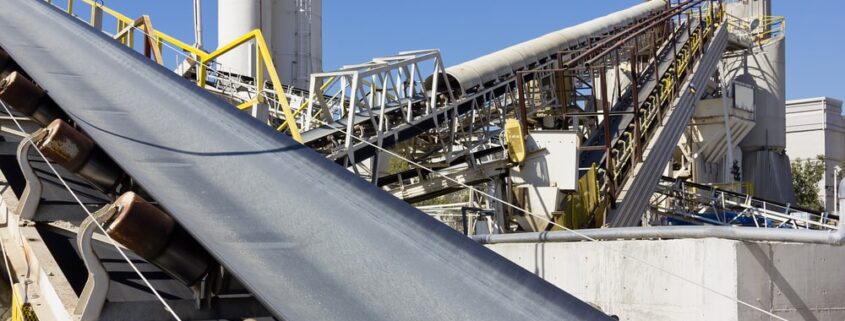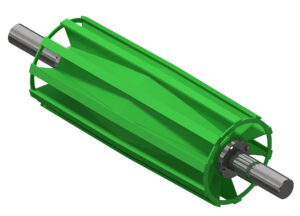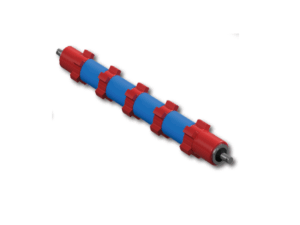Industrial conveyor systems are essential for efficient material handling across numerous industries. But like any machinery, they’re prone to wear, tear, and operational challenges that can lead to costly downtime. Understanding these common conveyor system issues and how to prevent them can help extend the life of your equipment and keep production running smoothly.
Let’s break it down:
Material spillage
Spillage happens when materials fall off the system during transfer or along the line. While some spillage is inevitable, excessive amounts can indicate misalignment, poor loading practices, or worn components.
How to Prevent It:
- Maintain proper system alignment.
- Install impact beds or skirt clamps at load points.
- Regularly clean and inspect the system to prevent buildup.
Seized Rollers
Seized rollers are one of the most common issues found with conveyor systems, often caused by excess buildup from spillage. When rollers stop turning, friction increases, leading to wear and system inefficiency over time.
How to Prevent It:
- Use components like Luff’s High Moisture Seal & Anti-Lock Shield to prevent material from entering the rollers.
- Schedule frequent inspections to catch early signs of wear.
Material Carry-Back
Carry-back occurs when material sticks to the conveyor system instead of discharging completely as it should when functioning normally. Over time, this buildup can cause blockages, damage, and increased maintenance needs
How to Prevent It:
- Use cleaning systems or scrapers designed for your conveyor type.
- Conduct regular cleaning and inspections to remove residual material.
Material Blockage
Blockages can bring operations to a halt, especially when material becomes lodged in vulnerable areas. Causes may include sharp edges, worn parts, or improper loading practices.
How to Prevent It:
- Inspect for worn edges, holes, or areas of buildup.
- Install guide rollers or other accessories to reduce damage and jams.
Mistracked System
Mistracking happens when the conveyor moves off-center, creating uneven wear, increased spillage, and potential damage to other components.
How to Prevent It:
- Perform routine system checks for misalignment or uneven wear.
- Adjust components and tracking devices at the first sign of deviation.
Screw Conveyor Problems
Screw conveyors are often used for powders, granules, and other bulk materials, but they come with unique issues such as blockages, leaks, and unexpected stalls.
How to Prevent Them:
- Ensure the system is properly aligned to prevent breakage or misalignment.
- Keep covers tightly sealed to prevent leaks, especially when transporting hazardous materials.
- Train operators to avoid overloading and perform regular maintenance to ensure reliability.
Our Final Thoughts
Even small issues can lead to major downtime and costly repairs – which is the last thing you need. But by staying proactive and using high-quality conveyor system accessories, you can minimize risks and keep your operations running at peak efficiency.
Want to learn more about how to optimize your conveyor systems? Contact us today!




